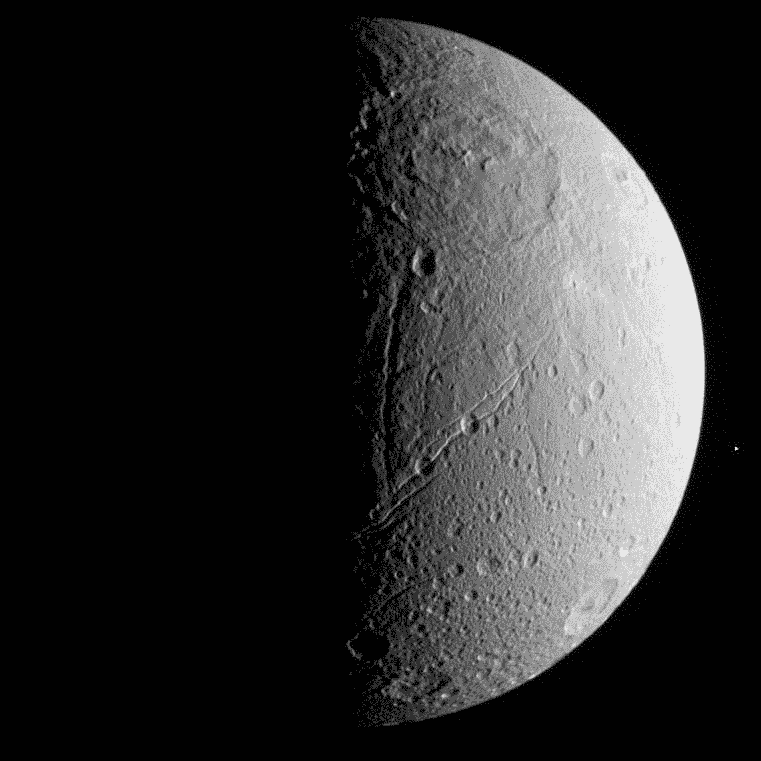Emily Lakdawalla • Apr 09, 2007
Dione's south pole
Cassini got a nice "Voyager-class" view of Saturn's moon Dione yesterday, passing about 250,000 kilometers from the moon's south pole. As is typical for these flybys, the images include a nice set through many filters, which the imaging team can use to study the colors of Dione's surface and how they appear to change with phase angle (illumination angle) and point of view. Mixed in with the color-filter views were five clear-filter images that were taken at very even intervals of about 3,700 kilometers apart; I assembled these five into an animation, and aligned them at Dione's south pole. I don't know if there's much (if anything) to learn from this animation but it's an unusual point of view on this moon so I thought it was fun.

In addition to the standard color- and clear-filter views there are also some very long-exposure images (like this one); the very long exposures washed out most of the daylit side of the moon. What's the point of these pictures? Sometimes they take such long-exposure views in order to see details on the Saturnlit side of the moon, and indeed, in the longest-exposure view you can actually see quite a bit of detail on the night side of Dione. Another reason to take long-exposure views is if you're looking for something really faint, like a faint ring or a plume. In fact, Anne Verbiscer reported from LPSC that Dione is an important contributor to material in the E ring. Most E ring material comes from Enceladus, which appears to spew 2 kilograms per second, but Dione contributes about 6 grams per second (or 0.3% of Enceladus' contribution). Were those pictures to look for plumes from Dione? My guess would be no, because the viewing geometry isn't very good; if you want to look for faint, fine material, the best way to do it is with the Sun nearly behind the fine stuff so that it "forward scatters" light to the camera, like dust in a sunbeam. These views are lit from the side, which is not nearly as helpful. But I'd be very happy to be wrong...and I'd be even happier if, somewhere in the faint details in some Dione images, there was a sign of geologic activity on yet another moon of Saturn!
Support our core enterprises
Your support powers our mission to explore worlds, find life, and defend Earth. You make all the difference when you make a gift. Give today!
Donate

 Explore Worlds
Explore Worlds Find Life
Find Life Defend Earth
Defend Earth

